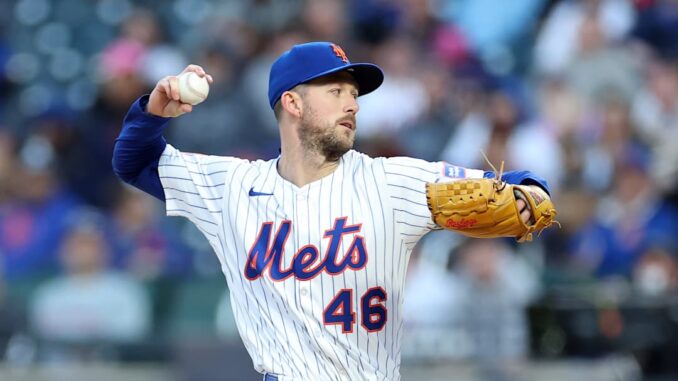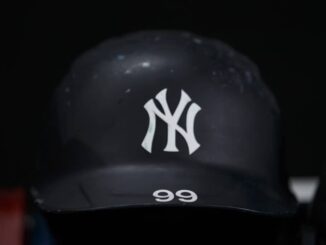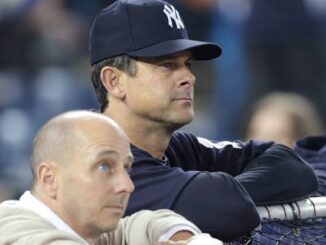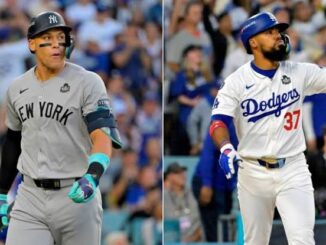
Yankees and Braves Accidentally Shift NL Race by Gifting Mets Quality Starters
The National League race was expected to be a heavyweight clash between perennial contenders like the Braves and Dodgers. Few had the New York Mets in that conversation—at least not seriously. Yet, through a series of what now appear to be unintentional boosts, the Mets have clawed their way into the spotlight, thanks in no small part to a couple of starting pitchers who were once in the hands of their fiercest rivals: the New York Yankees and the Atlanta Braves.
In what might go down as one of the most ironic twists of the 2025 season, both the Yankees and Braves have indirectly strengthened the very team they were hoping to keep down. Through trades and roster decisions, they placed two talented arms—pitchers now anchoring the Mets’ surprisingly competitive rotation—right into the Mets’ lap. And with the NL playoff picture tightening, those moves could haunt them all year long.
From Depth Pieces to Key Contributors
Let’s be clear: neither of these pitchers were seen as headline-making losses at the time. The Yankees, always rich in pitching depth, considered one expendable after minor league inconsistencies and early big-league struggles. The Braves, meanwhile, let go of another during a roster crunch, not foreseeing the breakout that would come the moment he landed in Queens.
But the Mets, reeling from injuries and lacking rotation stability, gave them the one thing they needed: opportunity. And boy, have they taken it.
One has developed into a mid-rotation stalwart with a sub-3.50 ERA and a calm, calculated demeanor on the mound. The other? He’s turned into a flamethrower with strikeout stuff that has National League hitters flailing. Together, they’ve not only solidified the Mets’ rotation, but they’ve also injected belief into a clubhouse that began the year with more questions than answers.
A Gift From the Bronx
The Yankees’ loss was particularly puzzling. Their decision to move on from the right-handed pitcher—a former top-10 prospect—came after a string of underwhelming starts and mounting frustration from fans and management alike. But underneath those rocky performances were signs of promise: velocity, movement, and flashes of command that suggested he just needed the right situation to thrive.
The Mets offered exactly that. Out of the Bronx spotlight and away from the high-pressure demands of Yankee Stadium, he’s flourished. His confidence has grown, his mechanics have been refined, and he’s even earned early All-Star consideration.
Yankees fans now find themselves watching his highlights with a mix of admiration and regret, wondering why their team couldn’t unlock the version the Mets are now enjoying.
Atlanta’s Misfire
The Braves’ error may prove even more costly. Known for their sharp front office and scouting department, Atlanta’s miscalculation in releasing or trading their young arm could come back to bite. He was considered more of a depth piece—someone who could eat innings in case of injury, but not necessarily a long-term building block.
Now? He’s throwing like one of the most improved pitchers in the league.
With a fastball touching the upper 90s and an off-speed arsenal that’s baffling hitters, he’s gone from forgotten fringe starter to a feared presence on the mound. The Braves, meanwhile, are facing rotation depth issues of their own, leading to understandable second-guessing.
Mets fans, on the other hand, are watching with glee as their once-suspect rotation suddenly looks like a playoff-caliber unit.
How It’s Shaping the NL Race
The National League was supposed to belong to teams like Atlanta, Los Angeles, and maybe even Philadelphia. But the Mets—thanks in large part to their rebuilt rotation—are now firmly in the hunt. They’re winning low-scoring games, getting quality starts deep into games, and buying time for their bullpen to remain fresh.
And what makes their rise all the more interesting is that their two most reliable starters weren’t even part of the team’s original blueprint. They were picked up quietly, almost forgettably. Yet here they are, dictating the pace of a pennant race.
Had these pitchers stayed where they were—on the Yankees and Braves—there’s a strong argument neither would be having this level of impact. But the very teams that wanted to suppress the Mets’ rise have, through oversight or impatience, helped spark it.
Reactions Around the League
Inside the Mets’ clubhouse, there’s a quiet sense of validation. Teammates and coaches praise the work ethic and professionalism of both pitchers. The front office has earned a rare pat on the back, with these under-the-radar moves suddenly looking like genius.
Meanwhile, the Yankees and Braves have taken different approaches. The Yankees have mostly deflected questions about the departure, pointing to “organizational direction” and pitching surplus. The Braves have been more reserved, simply acknowledging that “some guys need the right setting to succeed.”
Privately, though, there’s frustration. Not only did they lose capable arms—they lost them to a rival in the same city (in the Yankees’ case) or the same league (for the Braves). And in both instances, those arms are now helping the Mets chase the very postseason spots their former clubs want.
What Happens Next?
There’s still plenty of season left. The Mets could cool off, the pitchers could regress, and the NL giants might reassert their dominance. But if things continue as they are, the Yankees and Braves may find themselves watching the playoffs from home—wondering if they handed over the keys to one of 2025’s biggest surprises.
The Mets, on the other hand, are dreaming big. With a strengthened rotation, growing chemistry, and a chip on their shoulder, they’ve gone from overlooked to overachieving.
And they have two unlikely gifts—straight from the Yankees and Braves—to thank for it.



Be the first to comment